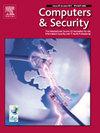FuzzAGG: A fuzzing-driven attack graph generation framework for industrial robot systems
IF 4.8
2区 计算机科学
Q1 COMPUTER SCIENCE, INFORMATION SYSTEMS
引用次数: 0
Abstract
As industrial robot systems (IRS) are increasingly utilized in smart factories, their information security issues have become particularly critical. Attack graphs, an essential system-level risk modeling technique, traditionally rely on predefined risk attributes and exploitation rules for their generation. However, this approach fails to meet the needs for attack graph generation and analysis in environments with missing risk data. To address this issue, this paper proposes a fuzzing-driven attack graph generation framework, FuzzAGG. This framework aims to provide an efficient and accurate method for generating attack graphs under conditions of incomplete risk data, thereby supporting information security analysis and risk assessment of IRS. In this paper, a risk data model (RDM) is constructed using the Meta Attack Language to achieve a structured description of the risk data of IRS. A fuzzing test case generation algorithm based on the MU-SeqGAN model is proposed, which can generate test cases suitable for the state machines of IRS and map them to specific Risk Data Model Objects (RDMOs). Additionally, a conversion unit is designed to integrate all RDMOs into a risk description file, which is then used by the generation unit to construct a graphical attack graph. In performance tests, FuzzAGG is able to achieve automated construction of IRS attack graphs containing 1000 state nodes in 42 min and maintain 88 % risk coverage. Taking the IRS of a PCB automated production line the effectiveness of the FuzzAGG framework is validated. The results demonstrate that FuzzAGG can automatically generate and validate an attack graph containing 184 attribute nodes and atomic attack nodes in 8 min with high operational efficiency, proving the practicality and reliability of this method in automated attack graph generation.
FuzzAGG:用于工业机器人系统的模糊驱动攻击图生成框架
随着工业机器人系统(IRS)在智能工厂中的应用越来越多,其信息安全问题变得尤为重要。攻击图是一种重要的系统级风险建模技术,传统上依赖于预定义的风险属性和利用规则来生成攻击图。但是,这种方法不能满足风险数据缺失环境下攻击图生成和分析的需要。为了解决这个问题,本文提出了一个模糊驱动的攻击图生成框架FuzzAGG。该框架旨在提供一种在风险数据不完整的情况下生成攻击图的高效、准确的方法,从而支持IRS的信息安全分析和风险评估。本文利用元攻击语言(Meta Attack Language)构建风险数据模型(RDM),实现对IRS风险数据的结构化描述。提出了一种基于MU-SeqGAN模型的模糊测试用例生成算法,该算法可以生成适合于IRS状态机的测试用例,并将其映射到特定的风险数据模型对象(rmos)上。此外,转换单元被设计成将所有rdmo集成到风险描述文件中,然后由生成单元使用该文件构建图形化的攻击图。在性能测试中,FuzzAGG能够在42分钟内实现包含1000个状态节点的IRS攻击图的自动构建,并保持88%的风险覆盖率。以PCB自动化生产线的IRS为例,验证了模糊agg框架的有效性。结果表明,FuzzAGG能够在8 min内自动生成并验证包含184个属性节点和原子攻击节点的攻击图,运行效率高,证明了该方法在自动生成攻击图中的实用性和可靠性。
本文章由计算机程序翻译,如有差异,请以英文原文为准。
求助全文
约1分钟内获得全文
求助全文
来源期刊

Computers & Security
工程技术-计算机:信息系统
CiteScore
12.40
自引率
7.10%
发文量
365
审稿时长
10.7 months
期刊介绍:
Computers & Security is the most respected technical journal in the IT security field. With its high-profile editorial board and informative regular features and columns, the journal is essential reading for IT security professionals around the world.
Computers & Security provides you with a unique blend of leading edge research and sound practical management advice. It is aimed at the professional involved with computer security, audit, control and data integrity in all sectors - industry, commerce and academia. Recognized worldwide as THE primary source of reference for applied research and technical expertise it is your first step to fully secure systems.
 求助内容:
求助内容: 应助结果提醒方式:
应助结果提醒方式:


